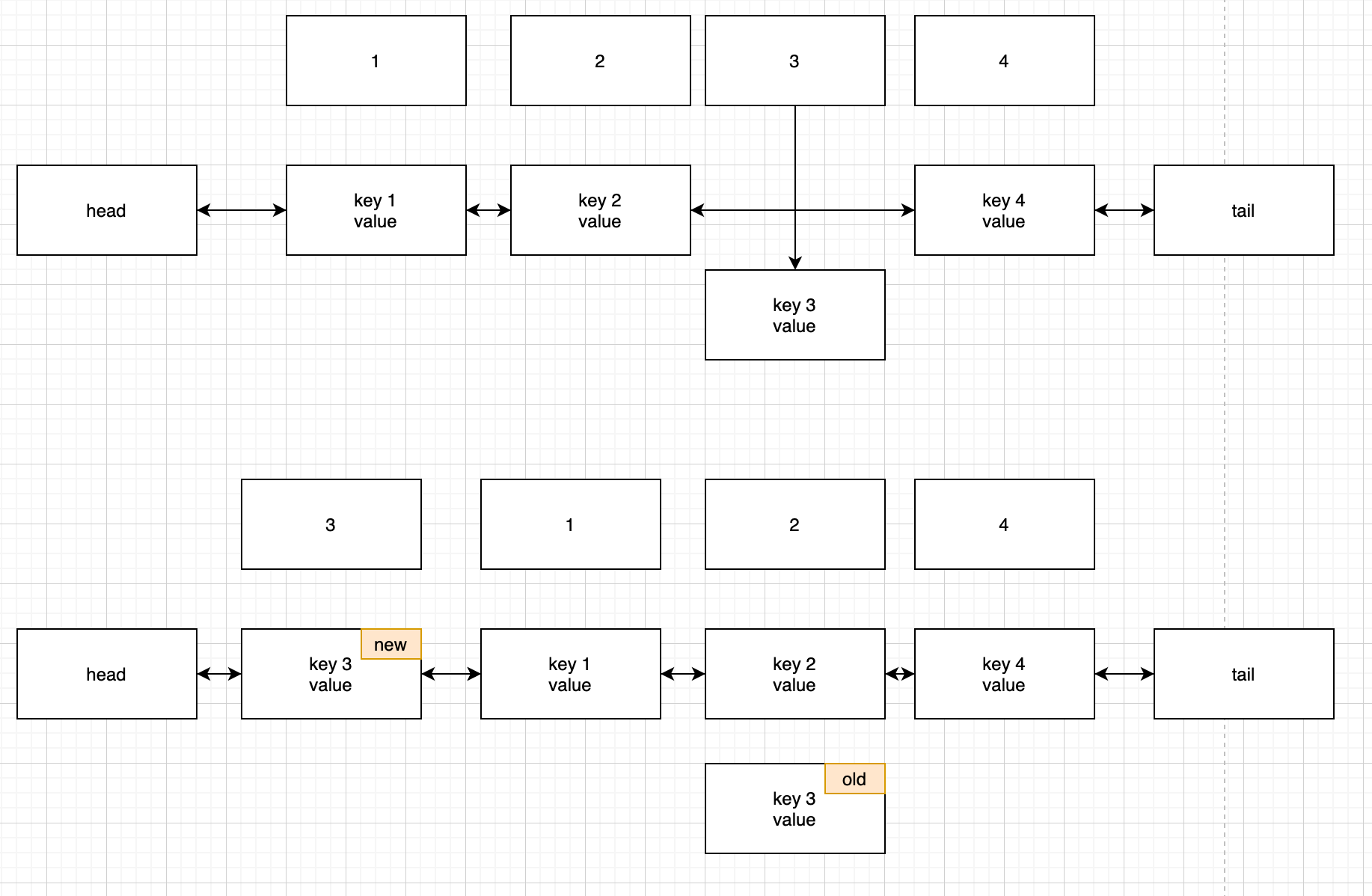请你设计并实现一个满足 LRU (最近最少使用) 缓存 约束的数据结构。 实现 LRUCache 类: LRUCache(int capacity) 以 正整数 作为容量 capacity 初始化 LRU 缓存 int get(int key) 如果关键字 key 存在于缓存中,则返回关键字的值,否则返回 -1 。 void put(int key, int value) 如果关键字 key 已经存在,则变更其数据值 value ;如果不存在,则向缓存中插入该组 key-value 。如果插入操作导致关键字数量超过 capacity ,则应该 逐出 最久未使用的关键字。 函数 get 和 put 必须以 O(1) 的平均时间复杂度运行。
分析
关注:
函数 get 和 put 必须以 O(1) 的平均时间复杂度运行。
以O(1)的时间复杂度进行get和put,数据结构需采用双向链表+Map
自定义链表
初始化
- 易错点1:链表的引用关系,移除了链表的节点后,引用关系发生改变,map需要重新put新的引用节点
[x] 易错点2:链表的引用关系,移除了链表的节点后,引用关系发生改变,map需要重新put新的引用节点
class LRUCache {DLink dLink;Map<Integer,Node> map;int cap;public LRUCache(int capacity) {dLink = new DLink();map = new HashMap<>();this.cap = capacity;}public int get(int key) {if (map.containsKey(key)){int val = map.get(key).val;put(key,val);return val;}return -1;}public void put(int key, int value) {Node node = new Node(key,value);if (map.containsKey(key)){dLink.remove(map.get(key));dLink.addHead(node);map.put(key,node); //易错点1}else {if (map.size() == cap){int oldKey = dLink.remove(dLink.tail.pre);map.remove(oldKey);}map.put(key,node); //易错点2dLink.addHead(node);}}class Node {int key;int val;Node next = null;Node pre = null;public Node(int key,int val) {this.key = key;this.val = val;}}class DLink {Node head;Node tail;public DLink() {this.head = new Node(-1,-1);this.tail = new Node(-1,-1);head.next = tail;tail.pre = head;}public void addHead(Node node){node.next = head.next;node.pre = head;head.next.pre = node;head.next = node;}public int remove(Node node){node.pre.next = node.next;node.next.pre = node.pre;node.pre = null;node.next = null;return node.key;}}}
易错点图示


